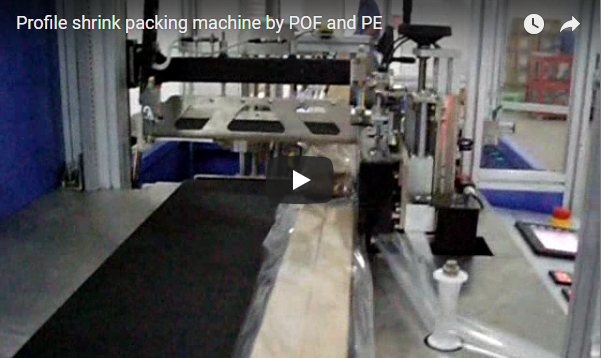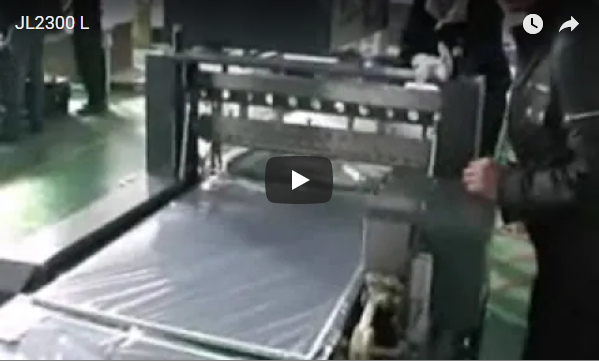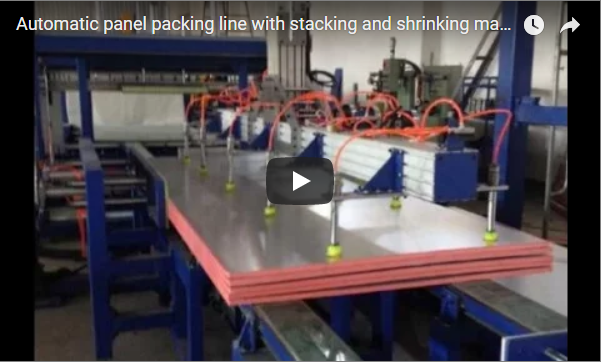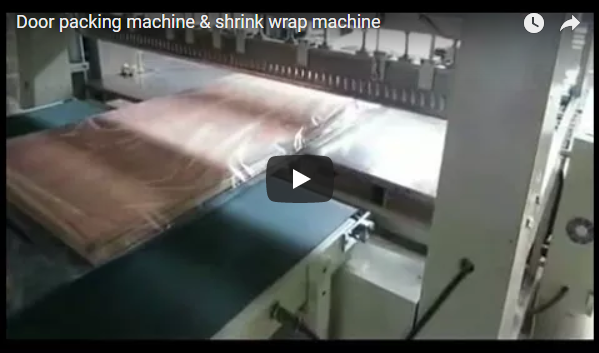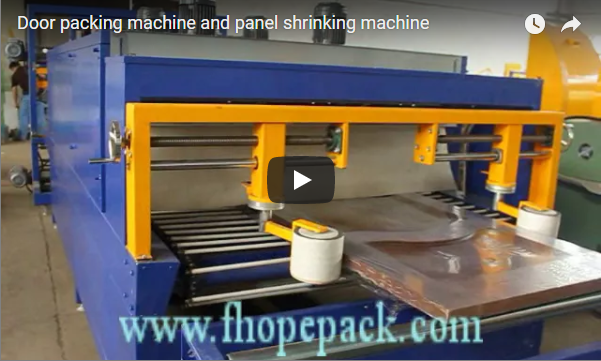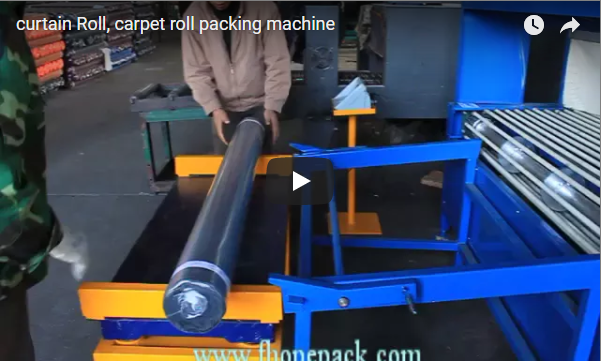Optimizing Logistics: A Closer Look at Door Packaging and Full-Size Panel Shrinking Machines
In modern manufacturing and logistics, particularly within the construction and furniture sectors, the safe and efficient handling of large, often delicate items like doors and panels is paramount. Damage during storage or transit not only incurs costs but can also lead to project delays and impact customer satisfaction. Specialized equipment, such as door packaging machines and full-size panel shrinking machines, offers robust solutions to these challenges. This article delves into the technical aspects, operational benefits, and practical considerations of these essential industrial packaging systems, drawing from industry experience.
1. The Core Challenge: Ensuring Protection for Large-Format Goods
Doors, large wooden panels, insulation boards, and similar items present unique packaging hurdles due to their size, weight, and susceptibility to scratches, moisture, and impact. Manual packaging methods are often time-consuming, labour-intensive, and can result in inconsistent protection. Automated or semi-automated systems using shrink film technology provide a standardized, high-integrity seal, crucial for maintaining product quality from the factory floor to the final destination.
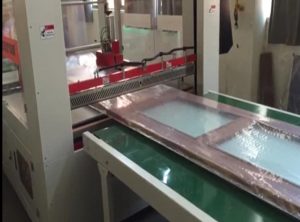
2. Focused Solution: The Door Packaging Machine
A dedicated door packaging machine is engineered specifically for the dimensions and handling requirements of various door types (e.g., wooden, PVC, metal).
- Working Principle: Typically, the process involves feeding a door onto a conveyor. The machine then automatically envelops the door in a sleeve or bag of polyethylene (PE) shrink film. Sensors detect the door's dimensions to ensure correct film dispensing. The wrapped door then passes through a heat shrink tunnel where controlled hot air circulation causes the film to shrink tightly around the contours of the door, creating a tough, protective layer.
- Key Technical Parameters (Typical Range):
- Max Door Dimensions (L x W x H): e.g., 2500mm x 1200mm x 100mm (Varies by model)
- Packaging Speed: 2-5 doors per minute (Dependent on size and film)
- Film Type: PE Shrink Film
- Film Thickness: 60-120 microns
- Sealing Method: Heat sealing bars (L-bar or side seal)
- Power Requirements: 380V/50Hz/3Phase (Typical industrial standard)
- Operator Experience & Benefits: From a user perspective, these machines significantly reduce the physical strain associated with manually wrapping heavy doors. They ensure a consistent, professional-looking package every time, minimizing film waste and improving throughput compared to manual methods. The tight wrap prevents shifting and abrasion during handling.
3. Handling Scale: The Full-Size Panel Shrinking Machine
When dealing with larger surfaces like full sheets of plywood, OSB, drywall, or large furniture components, a full-size panel shrinking machine (often incorporating a larger shrink tunnel) is necessary.
- Working Principle: Similar to the door machine, panels are typically conveyed into a wrapping station (often a side-seal or overlap seal system due to the larger width) where they are encased in PE shrink film. The critical component is the large-aperture shrink tunnel. Precise temperature control and airflow management within the tunnel are vital to ensure even shrinkage over the entire panel surface without overheating or causing distortion.
- Key Technical Parameters (Typical Range):
- Max Panel Dimensions (L x W x H): e.g., 3000mm x 1500mm x 200mm (Highly variable)
- Tunnel Aperture (W x H): Must accommodate the largest panel size plus clearance.
- Conveyor Speed: Adjustable, often 5-15 meters per minute.
- Temperature Range: 150°C - 220°C (Adjustable based on film and product)
- Cooling Zone: Often included post-tunnel to rapidly set the film.
- Industry Application Insights: In high-volume panel production (e.g., building materials), these machines are indispensable. They allow stacks of panels to be securely bundled and protected from environmental factors like moisture and dust during outdoor storage or transport on flatbed trucks. This level of protection is difficult and costly to achieve manually at scale.
4. Quantifiable Advantages of Automated Shrink Packaging
Moving beyond basic definitions, the tangible benefits experienced by businesses implementing these machines include:
- Increased Operational Efficiency: Automated wrapping and shrinking cycles dramatically increase throughput compared to manual wrapping, directly impacting productivity and order fulfillment speed. Packaging rates can often be measured in units per minute rather than minutes per unit.
- Superior Product Protection: The thermo-shrinkage process creates a tight, conforming barrier that immobilizes the product, significantly reducing the risk of scratches, dents, and surface damage. It also provides excellent protection against dust, dirt, and moisture – critical for wood-based products.
- Reduced Labour Costs & Improved Safety: Automation minimizes the need for manual handling and wrapping, reducing direct labour costs and mitigating risks associated with lifting heavy items and using manual cutting tools.
- Material Savings & Consistency: Machines optimize film usage, reducing waste compared to less precise manual methods. Every package receives a consistent level of protection, enhancing brand perception and reducing damage claims.
- Versatility and Scalability: Many machines offer adjustable parameters to handle a range of product sizes within their design limits. Customizations, such as integration with existing production lines or specific conveyor types, are often possible.
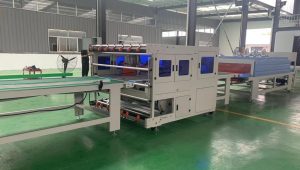
DOOR PACKING MACHINE FHOPE 5. Selecting the Right Shrink Packaging System
Choosing the appropriate machine requires careful consideration of several factors:
- Product Range: Define the minimum and maximum dimensions (L, W, H) and weight of the items to be packaged.
- Throughput Requirements: Determine the number of units that need to be packaged per hour or per shift.
- Film Specifications: Consider the required film type (PE), thickness, and potential need for UV protection or printing.
- Factory Layout: Assess available floor space, ceiling height, and power supply availability.
- Integration Needs: Will the machine operate standalone or need to integrate with upstream/downstream conveyors?
- Budget: Balance initial investment against long-term savings in labour, materials, and reduced product damage.
Conclusion: Investing in Protection and Efficiency
Door packaging machines and full-size panel shrinking machines represent a significant technological step up from manual methods. They offer a robust, reliable, and efficient means of protecting valuable large-format products throughout the supply chain. For businesses in the door, panel, construction, and furniture industries, investing in the right automated shrink wrapping solution can lead to substantial improvements in operational efficiency, product quality assurance, and overall profitability.
For detailed specifications, technical consultations, or to discuss how these solutions can be tailored to your specific operational needs, please explore further resources or get in touch:
Explore Shrinking Machine Options: https://www.fhopepack.com/Shrinking_machine.html
Contact for inquiries: info@fhopepack.com

